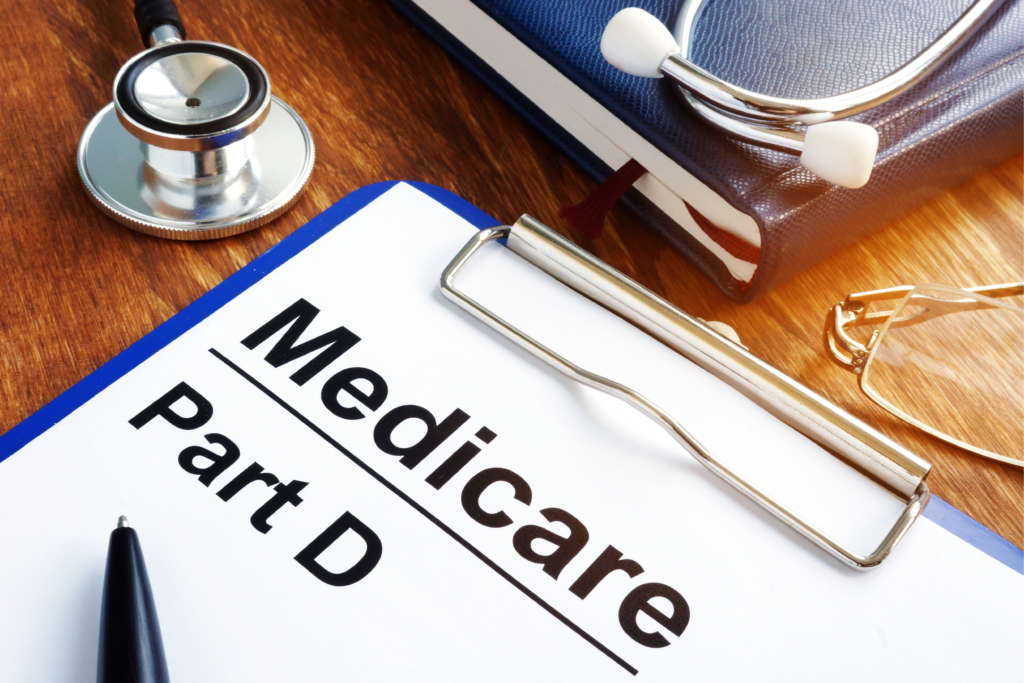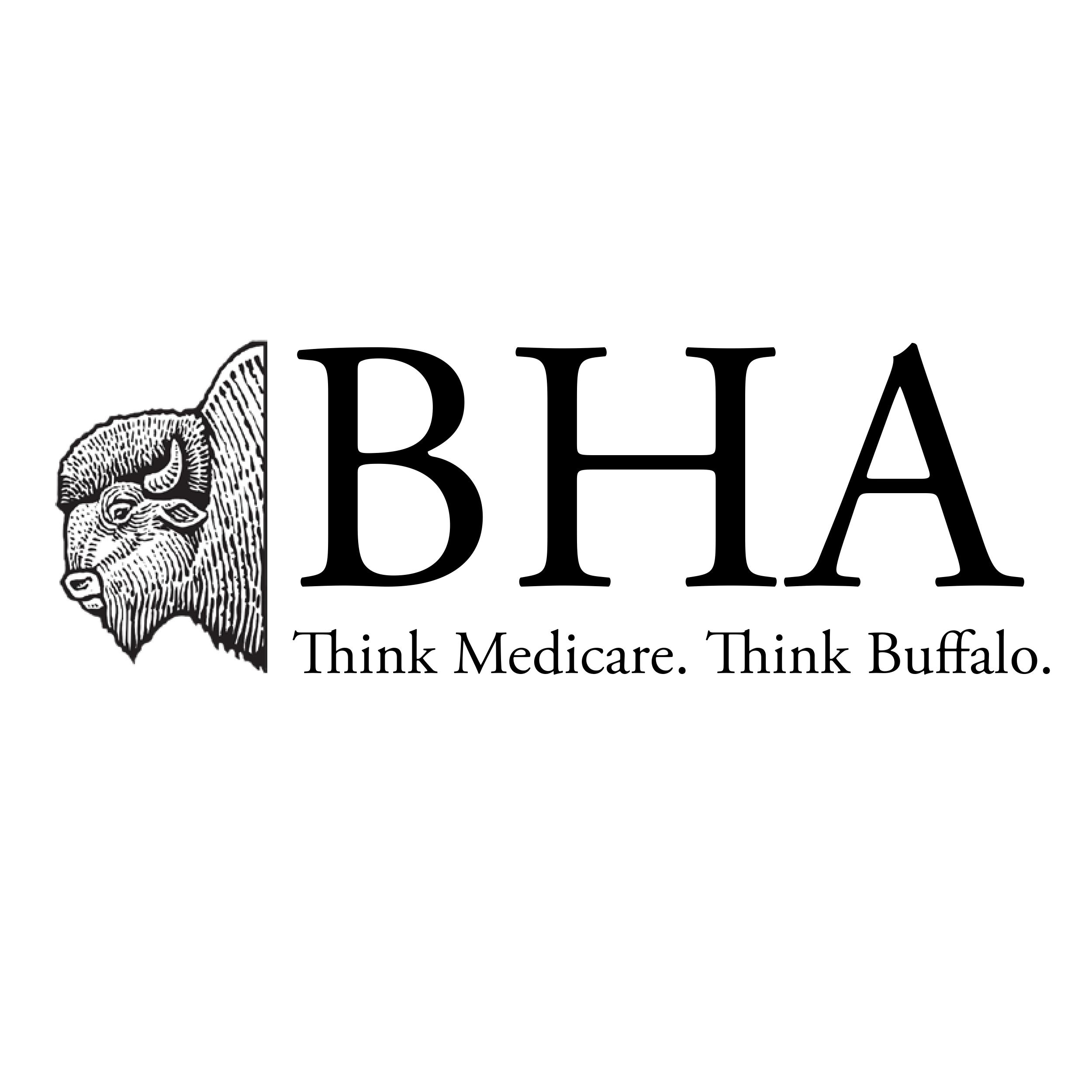What is Medicare Part D Prescription Drug Coverage?
If you need Medicare prescription drug coverage, the most common plan is Medicare Part D. This plan type gives standardized coverage set by Medicare. Part D plans can be combined with Medicare Parts A and B, as well as other Medicare Advantage. Getting Medicare Part D prescription drug coverage varies depending on the plan you get. There’s a lot to unpack with these plans, but we can help you find the right coverage plan for your needs.
This page goes over the different plan types, payment processes, and prescription drug coverage involved with Medicare Prescription Drug Plans.
How Do I Know Which Plan I Need?
Because everyone has different healthcare and prescription needs, drug coverage plans have a lot of variables. Navigating all of your options may be overwhelming or difficult. When searching for Part D coverage, people often ask questions like:
- Do I take specific prescriptions?
- Do I want protection from high prescription drug costs?
- Do I want balanced drug expenses during the year?
- Will my coverage help me avoid future penalties?
Here at Buffalo Health Advisors, we know that looking for the right coverage can be hard. Our health agents are here to help you understand all of your options. If you don’t qualify for Medicare yet, we also have health insurance options available for people under the age of 65. If you have any questions, give us a call or book an appointment right here on our website.

Why are There so Many Plan Options?
When the Medicare program was created, the federal government outlined essential covered services that all Medicare plans must cover. Including, Part D plans. From there, private insurance companies were allowed to provide part D coverage, so long as they met or exceeded the original requirements established by Congress. Insurance companies now have a lot of freedom to offer plans that appeal to all kinds of customers.
Deciding which plan is right for you can be confusing. At Buffalo Health Advisors, you can find someone to talk to and help you choose a plan.
How do I Pay for My Coverage?
The first cost to Part D is a monthly premium, and the amount varies depending on the plan.
Payment for covered prescriptions is handled in four different parts. Your plan may start you with a deductible or in the initial coverage stage. Which stage you’re in depends on pay limits that are established by your plan.
Deductibles
Just like deductibles for Medical Savings Accounts and PPO plans, you are responsible for all costs until the payment threshold is reached. Some plans may not have a deductible, but any prescriptions you fill will be put towards your deductible.

Beginning Coverage
At this level, subscribers pay coinsurance and copayments up to another level. Copays are a common coverage option. They are also used with other types of Medicare Advantage plans such as PFFS plans, PPO plans, and HMO plans.
Copayments are usually a flat fee but will increase in price depending on the drug. For example, generic drugs usually have lower copays, while specialty drugs will have the highest copays.
Coverage gap or “donut hole”
This is the second phase of Part D plans. People enrolled in a Medicare Advantage plan with prescription drug coverage, reach this stage when they hit a certain cost amount. The amount changes from year to year.
As of 2017, people who enroll in Medicare Part D cover 40 percent of the plan’s price for brand-name drugs. In terms of generic prescriptions, subscribers usually cover 51 percent of the plan’s price. However, in 2020 the percentage gap dropped down to 25 percent of prescription drug costs.
In order to get out of the coverage gap, your prescription drug costs must reach $6,350. This is the coverage checkmark for 2020. Keep in mind that this does not include the costs paid by your plan. Once you pay this amount, you will qualify for catastrophic coverage.
Catastrophic Coverage
This is the final level of coverage under Part D. Usually, subscribers only hit this level when they face serious medical needs. From here on, the subscriber-only pays minimal copayments for prescriptions. The average amount is around 5 percent of the total cost. One reached, these terms last until the coverage cycle restarts at the end of the year.
You will still have to pay monthly premiums and out of pocket from drugs not covered by your plan. This also includes out of pocket costs from pharmacies outside of your plan network.

What Drugs Are or Are Not Available?
When Part D was organized by Congress, they established baseline prescription drug coverage. This meant that plans must include a combination of two of the following medications types:
- Antidepressants
- Antipsychotics
- Anticonvulsants
- Antiretrovirals
- Immunosuppressants
- Anti-cancer drugs
If your plan does not cover the medication type you need, you can apply for a coverage determination or exception. Before granting this exception, your plan will likely have you try similar medications that they do cover. If your application does not go through at first, you can always ask again.
There are certain drugs that Medicare will not cover by law. These medications include over-the-counter drugs, weight management pills, cosmetic medication, fertility medicine, and erectile dysfunction prescriptions.
Coverage Limits for Medicare Part D Prescription Drug Plans
When filling prescriptions on a Part D plan, you may run into these additional limits. If your prescription falls under one of these categories, you may have to jump through a few hoops before your plan will cover your prescription. The terms for these limits are quantity limits, prior authorization limits, and step therapy limits.
Quantity limits mean that the plan will only cover prescriptions that they see as normal treatment for a condition. For example, a plan may not cover an antibiotic for 20 days, when normally it is prescribed for 10 days.
Prior authorization limits usually trigger when you need a prescription outside of the plan’s approved list. Normally, this happens with expensive or stronger medications. If this happens to you, work with your doctor and get specific documentation for why this medication is essential to your health.
Step therapy limits are when your plan requires you to try cheaper or generic medications in place of your prescription. These are in place to help you and your insurance save money. Should these options prove ineffective, your doctor can help you get the first prescription.

Working With a Buffalo Health Insurance Advisor
As you can see there are many facets to Medicare Part D. Here at Buffalo Health Advisors, we know getting the right coverage can be a confusing and overwhelming process. Our expert health insurance agents are here to help. Reach out and let us work with you to get you the right health insurance.
Call us at 888-218-4543 and set up an appointment today!
Other Medicare Advantage Plans
Let Us Help You Find The Right Plan
Here at Buffalo Health Advisors, we know that looking for the right coverage can be hard. Our health agents are here to help you understand all of your options. If you have any questions, give us a call or book an appointment right here on our website.
Hallie Mitchell
Operations
Director
Tiffany Porter
Growth Director
Debbie Carter
Commissions Director
Harrison Cheatham
Account Manager
KY, TN
Junior Douglas
Account Manager
TN, AL
Mark Borders
Account Manager
TN
Gabbi Green
Contracting Lead
Kendall Chanley
Recruiting Lead
Rachel Fuerst
Operations
Rachel Crooks
Project Manager

